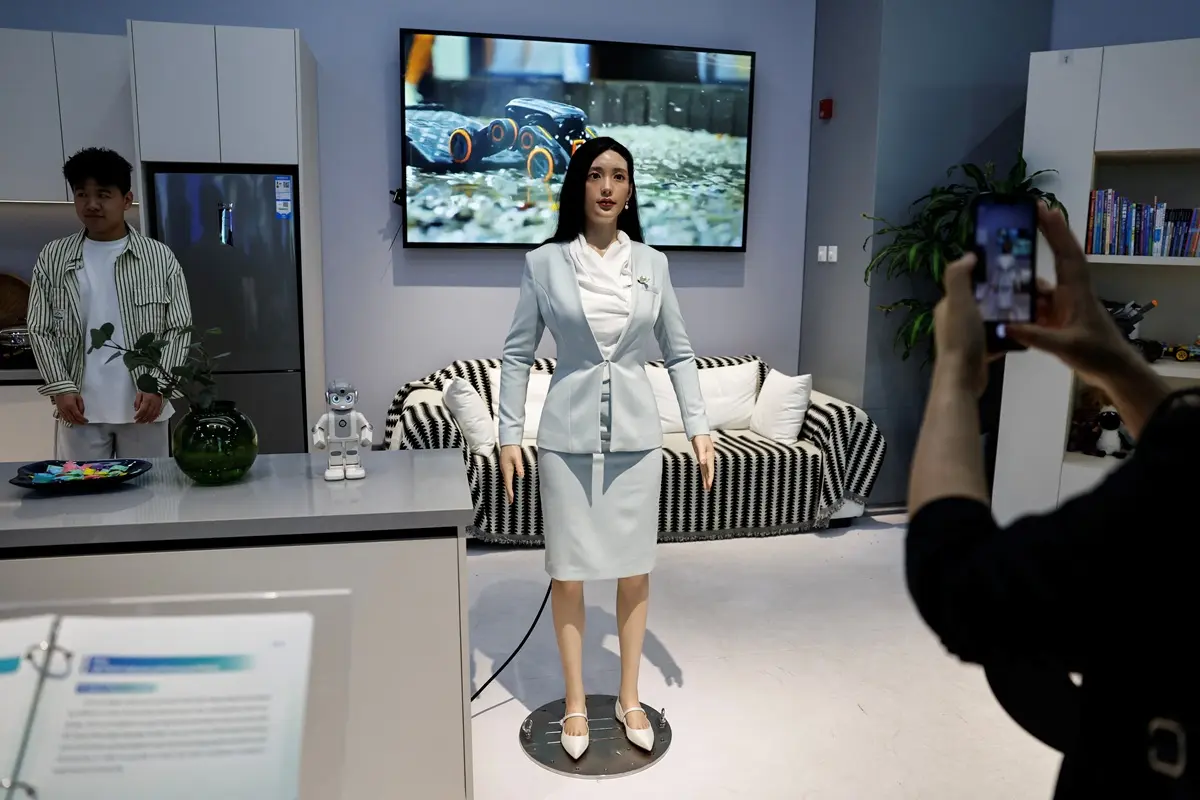Artificial intelligence and robotics are becoming increasingly integrated into our daily lives, and China is taking this to the next level. A groundbreaking innovation is set to debut in 2025: a $20,000 home companion robot that aims to redefine human-robot interaction. This state-of-the-art creation, developed by a Chinese robotics firm, is not just a technical marvel—it represents a shift in how societies view artificial companionship, personal assistance, and AI integration within the home.
This article explores the upcoming home companion robot from China, its key features, potential uses, and what it means for the future of smart living.
The Rise of Home Companion Robots
What Is a Home Companion Robot?
A home companion robot is an autonomous machine designed to assist individuals in household environments. Unlike traditional service robots that focus solely on cleaning or logistics, companion robots are equipped with AI-powered features that enable them to communicate, understand, and interact with humans in emotionally supportive ways.
These robots often feature natural language processing, facial recognition, gesture detection, and mobile navigation systems. They're created to assist elderly users, provide companionship to those living alone, and even help manage household tasks.
China's $20,000 Robot: What Sets It Apart?
The newly announced Chinese home companion robot, priced at approximately $20,000, is built using advanced robotics and AI technologies. According to early previews, this robot is humanoid in design, capable of mimicking human movement and expressing emotions through facial expressions, tone of voice, and programmed responses.
Key highlights include:
- AI-Driven Communication: The robot can hold natural conversations using large language models.
- Motion and Balance: It walks on two legs with fluid motion, similar to humanoid robots like Tesla’s Optimus or Boston Dynamics’ Atlas.
- Daily Support Functions: Includes reminders, schedule management, environmental monitoring, and interactive learning.
- Social and Emotional Interaction: It recognizes faces and emotional states, responding with empathy and tailored interactions.
The company behind the robot, which is reportedly aiming for both domestic and international markets, views this project as the next leap in consumer robotics, combining hardware excellence with AI fluency.
Use Cases: More Than Just a High-Tech Toy
1. Elderly Care and Assistance
With global populations aging rapidly, home companion robots can become crucial allies for elder care. The robot can remind users to take their medication, alert family or emergency services in case of a fall or medical emergency, and provide friendly conversation to combat loneliness.
2. Children's Education and Engagement
For families, the robot can serve as a tutor and entertainment system for children. It can help with language learning, read bedtime stories, and answer questions in a fun and interactive manner, all while being safe and supervised.
3. Smart Home Integration
These robots can connect with smart appliances—controlling thermostats, lights, and security systems. Users can interact with their entire smart home ecosystem through verbal commands issued to the robot, transforming it into a mobile smart assistant.
4. Remote Presence and Monitoring
Thanks to its mobile video and audio capabilities, the robot can serve as a proxy for remote workers or family members. Parents can check in on children, and employers can use it for telepresence in office environments.
The Business of Personal Robots
The announcement of this robot enters a growing but competitive market. While robots like Amazon’s Astro or Japan’s Pepper have laid the groundwork, the Chinese manufacturer’s pricing and feature set suggest it’s targeting a more premium audience—tech-savvy early adopters and high-income households in Asia, Europe, and North America.
Though the $20,000 price tag may seem steep, it falls in line with other advanced AI applications when first launched. Over time, mass production and competition could reduce prices and increase accessibility.
Investment in robotics companies across China has surged, with significant state and venture capital support. The government sees robotics and AI as central to future economic growth, and this robot’s debut is a direct reflection of that strategy.
Challenges and Ethical Considerations
While exciting, the rise of home companion robots also presents unique challenges:
- Privacy and Surveillance: With built-in cameras, microphones, and internet connectivity, these robots raise concerns about data collection and cybersecurity. How much will they know about our lives, and who controls that data?
- Emotional Dependence: Some experts caution that overly realistic interactions may lead individuals—particularly children or the elderly—to form unhealthy attachments or neglect real human relationships.
- Job Displacement: As home assistant robots become more capable, there’s fear that they may replace roles traditionally held by caregivers or domestic workers, affecting employment.
These concerns highlight the need for regulations, ethical frameworks, and robust data protections before widespread adoption occurs.
Looking Ahead: The Future of AI in Homes
The launch of China’s $20,000 home companion robot is a milestone in the broader evolution of personal robotics. As AI models grow more advanced and hardware becomes cheaper and more adaptable, we are on the cusp of integrating humanoid robots into everyday life.
In the next five to ten years, we may see these machines:
- Teaching in classrooms
- Assisting in hospitals
- Supporting mental health therapy
- Acting as personal trainers or chefs
What began as science fiction is now a real business and cultural frontier. This Chinese-developed robot is only the beginning of what may be a new era of coexistence between humans and intelligent machines in domestic spaces.
Conclusion
The debut of China’s $20,000 home companion robot marks an exciting, albeit complex, chapter in the global AI and robotics journey. With its lifelike interactions, daily utility, and social intelligence, this robot could revolutionize how we think about technology’s role in personal life.
As the world watches closely, one thing is clear: the smart homes of the future might not just have sensors and screens—they may have companions who walk, talk, and understand.
Read More






 Friday, 21-11-25
Friday, 21-11-25







